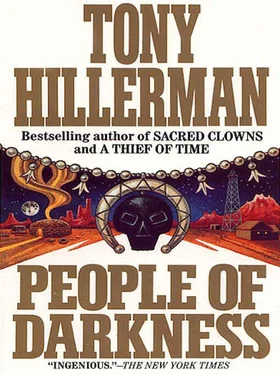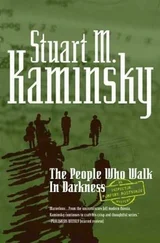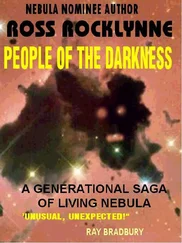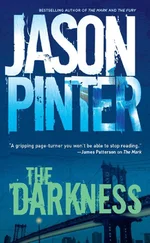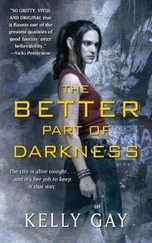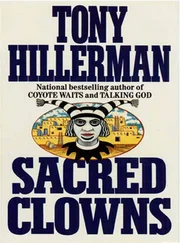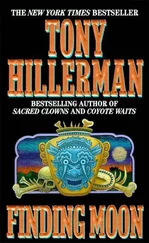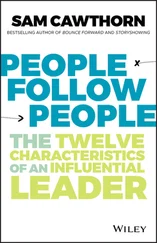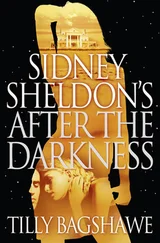Tony Hillerman - People Of Darkness
Здесь есть возможность читать онлайн «Tony Hillerman - People Of Darkness» весь текст электронной книги совершенно бесплатно (целиком полную версию без сокращений). В некоторых случаях можно слушать аудио, скачать через торрент в формате fb2 и присутствует краткое содержание. Жанр: Триллер, на английском языке. Описание произведения, (предисловие) а так же отзывы посетителей доступны на портале библиотеки ЛибКат.
- Название:People Of Darkness
- Автор:
- Жанр:
- Год:неизвестен
- ISBN:нет данных
- Рейтинг книги:3 / 5. Голосов: 1
-
Избранное:Добавить в избранное
- Отзывы:
-
Ваша оценка:
- 60
- 1
- 2
- 3
- 4
- 5
People Of Darkness: краткое содержание, описание и аннотация
Предлагаем к чтению аннотацию, описание, краткое содержание или предисловие (зависит от того, что написал сам автор книги «People Of Darkness»). Если вы не нашли необходимую информацию о книге — напишите в комментариях, мы постараемся отыскать её.
People Of Darkness — читать онлайн бесплатно полную книгу (весь текст) целиком
Ниже представлен текст книги, разбитый по страницам. Система сохранения места последней прочитанной страницы, позволяет с удобством читать онлайн бесплатно книгу «People Of Darkness», без необходимости каждый раз заново искать на чём Вы остановились. Поставьте закладку, и сможете в любой момент перейти на страницу, на которой закончили чтение.
Интервал:
Закладка:
“Quite a coyote,” Mary said. She shivered again and hugged herself.
The hogan was silent now, and suddenly there was light at the doorway as the blankets hung across the opening were pulled back.
Chee reached into the cab of the truck and turned on the dome light. It was polite to let people know who was calling on them.
Contrary to Mary’s pessimism, Mrs. Musket was there. She was a gray-haired, sturdy woman with a red-and-green mackinaw over the voluminous velveteen blouse and skirt of traditional Navajo womanhood. She wasn’t sure she wanted to talk about Windy Tsossie.
Rudolph Charley invited them into the hogan out of the cold, and stood beside them listening. Rudolph Charley looked a lot like Tomas Charley. Just a little younger and even thinner.
“It all happened a long time ago,” Chee was saying. “Before he married your sister. There was an explosion at an oil well where he worked. We want to see if he remembers what happened.”
Mrs. Musket stared at Chee, glanced nervously at Mary, at Charley, and then back at Chee.
“He won’t remember anything,” Mrs. Musket said.
“It seems like just about everybody else who was working with Tsossie is dead,” Chee said. “We can’t talk to them. We want to talk to him.”
“I think Windy is dead, too,” Rudolph Charley said. “I think the witch got them all.”
“Yes,” Mrs. Musket said. “He’s dead.”
“When did he die?” Chee asked. He suspected Mrs. Musket was lying. Experience taught one to watch the face of a person being questioned. Lying made almost everyone nervous. Mrs. Musket was nervous. But then she would be nervous anyway, at being questioned by strangers who appeared out of the darkness to talk of death. And there was more to it than nervousness. Something vague and hard to define. And he thought that he knew what was causing it. Mrs. Musket had eaten peyote and drunk of the “black drink” of the ceremonial – peyote tea. She was in that dreamy world of the psychedelic. He glanced at Rudolph Charley. The road chief of his ceremonial, too, looked at Chee as if he wasn’t sure that Chee existed.
“When did he die, then?” Chee repeated. “And where did they put the body?”
“Long time ago,” Mrs. Musket said. She stood looking at Chee and through Chee. The seconds ticked away. “They lived out behind Bisti in the badlands. I wasn’t with them. But my sister’s husband was a witch, and somebody turned the witching around against him. He got corpse sickness and he died.”
“You weren’t there, but you heard about it? Is that right? From your sister?” Chee asked.
“From my sister,” Mrs. Musket agreed.
“He died of a sickness?”
“Corpse sickness,” Mrs. Musket said.
“Where?”
“In my sister’s hogan.”
“And they buried him there?”
“They got a white man who worked there at Bisti to come and put the body out in the rocks. They told me that he put it in a little blowhole in the side of a cliff and covered it over with rocks.”
“It’s all starting up again,” Rudolph Charley said suddenly. “More witching.”
Chee looked at him. Charley’s eyes were focused somewhere a long way off.
“The first time it killed my grandfather, and all the people who the Lord Peyote let see through the doorway. The witching killed all six of them. And now it has started up again. First it killed my grandfather. Now it has killed my father, and it killed my brother. Tonight we are asking the Lord Peyote to let us see what will happen next…” His voice trailed off.
Mary began a word and bit it off. The four of them stood there, silently, waiting for the road chief to continue. Beyond Charley, Chee could see the room. The packed earthen floor had been cleared of furnishings. The peyote altar had been built across the back of it – a low crescent shape of hard-packed sand. The peyote moon, they called it. At its center, where the sand was perhaps six inches high, a cup-sized bed of cedar twigs had been built. In this nest the gnarled, hairy shape of a peyote button rested. On the sand beside it was a small silver box, lid open. Behind the peyote moon two zigzag lines were inscribed in the earth, representing the footprints of Christ. The Native American Church as it came to the Checkerboard was more or less Christian. Christ taught the white man only through the Bible, because the white man had crucified him. But the Navajo, who had not harmed Christ, God instructed directly through visions. And Lord Peyote was the instrument, the key to the door which led to reality.
Rudolph Charley still stood motionless, caught in some odd drug-induced expansion of time.
“Did he let you see?” Chee asked.
“I saw the mole,” Rudolph Charley said. “The amulet that was my father’s and my grandfather’s.”
“Nothing else?” Chee asked.
The door opened and two men ducked through – both young. They glanced at Chee and at Mary. One added sticks to the piñon fire which had burned to a bed of coals in the hogan fire pit. The other went to the back wall and squatted by the pot drum, watching and waiting. Rudolph Charley’s mood changed.
“Nothing you would understand,” he said. “We have to start again now. We have to finish the service.”
“The man you want to talk to is dead,” Mrs. Musket said.
“All right,” Chee said. “Then tell me where to find the blowhole where they put his body.”
29
FINALLY COLTON WOLF was ready. He’d had both a CB radio and a radiotelephone installed in the cab of the pickup. He had driven up an arroyo east of the Sandia Mountains and refreshed his marksmanship with both his rifle and his.22 caliber pistol. The rifle was an expensive.30 caliber Ruger equipped with a scope. He’d fired off half the shells from a 100-round carton, adjusting the open sights for ranges up to 250 yards and the scope up to 800. Then he’d established with a telephone call to the hospital that Western Union couldn’t deliver a telegram to Jim Chee because Jim Chee had checked out. That confirmed what Colton had expected. Next he called the city desk at the Albuquerque Journal , identified himself as a professor at the university, and got permission to do some research in the newspaper’s library. An hour of reading through clippings of crime reports provided him with the names of FBI agents and sheriff’s officers who worked on or around the Navajo reservation. He jotted the names and pertinent information into his notebook and then asked if there was a file on B. J. Vines. There was. The oldest clipping reported a transfer of uranium leases from Vines to a consortium of mining companies headed by Kennecott Copper and Kerrmac Nuclear Fuels. Another, a wire service story originating in New York, reported that Vines had won the Weatherby Trophy, the world championship of big-game hunting. The only substantial story was a feature, with photographs, of the construction of Vines’ home on the slope of Mount Taylor. The residence was described as “probably the most expensive ever built in New Mexico.” The man whose name Colton had found in the box he’d been hired to recover was obviously rich enough to pay the cost of recovering it. There was a good chance, then, that Vines was the client. Not a certainty, because someone else seemed to have wanted the box. But Vines seemed most likely. Colton added to his notes a description of the house and its location. If all else failed, that might be useful.
Colton’s last stop was at the municipal library, where he checked through the file of telephone books and noted the numbers he might need. And then he drove westward from Albuquerque, climbing out of the Rio Grande valley, crossing the Rio Puerco breaks, and rolling at a steady fifty-five miles an hour across the empty mesa-butte landscape of west central New Mexico. As he drove, he tested his radio reception on the federal and law-enforcement channels. Reception was excellent. The technique and terminology of the radio dispatchers was no different from what he’d heard in other states. Then he tested the telephone connection by calling the U.S. Weather Service for the forecast. For the west central plateau of New Mexico, the forecast was for increasing afternoon cloudiness, periodic gusty winds, and colder temperatures through the afternoon, with a 60 percent chance of snow before midnight. The green interstate information sign told Colton that the Grants interchange was ahead. To his right, Mount Taylor rose against an unnaturally blue sky, its highest slopes white with snowbanks. He let the camper roll to a stop on the shoulder of the highway, picked up the phone, checked his notebook for the names he wanted, and placed a call to the Navajo Tribal Police subagency office at Crownpoint.
Читать дальшеИнтервал:
Закладка:
Похожие книги на «People Of Darkness»
Представляем Вашему вниманию похожие книги на «People Of Darkness» списком для выбора. Мы отобрали схожую по названию и смыслу литературу в надежде предоставить читателям больше вариантов отыскать новые, интересные, ещё непрочитанные произведения.
Обсуждение, отзывы о книге «People Of Darkness» и просто собственные мнения читателей. Оставьте ваши комментарии, напишите, что Вы думаете о произведении, его смысле или главных героях. Укажите что конкретно понравилось, а что нет, и почему Вы так считаете.
